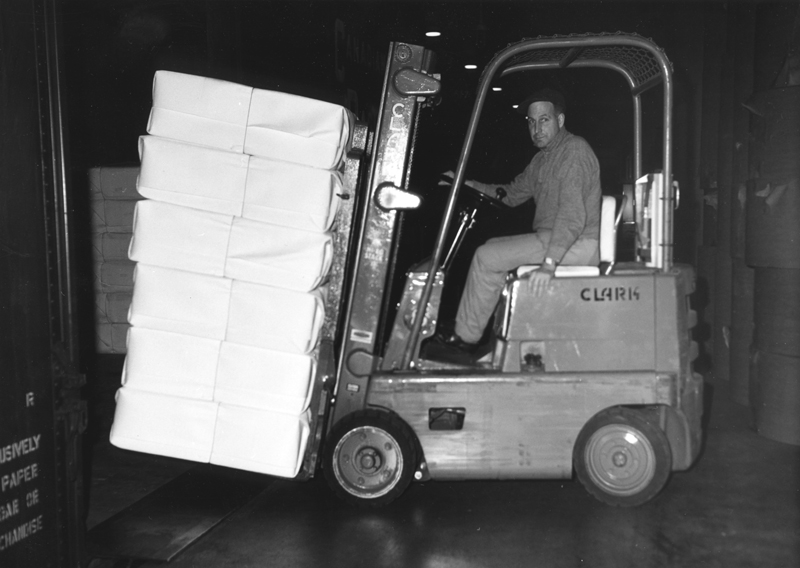Don started working at the Dryden Paper Mill in 1972. During his first day at work he trained as a broke hustler on the Number 4 paper machine. The responsibility of the broke hustler was to take low quality paper as well as extra paper from the reel and put it in the beater where it is changed back to pulp. The word hustler comes from the fact that the worker had to hustle as defective paper came off the paper machines quickly and in large amounts. On his first day, Don received limited safety training, he was simply told not to get hurt.
Please see more text further down this page
On the left is the number 1 pulp machine and on the right is the number 2 paper machine. Notice the broke paper in the alleyway between the two machines. This paper was eventually put back into the beater and made again into pulp
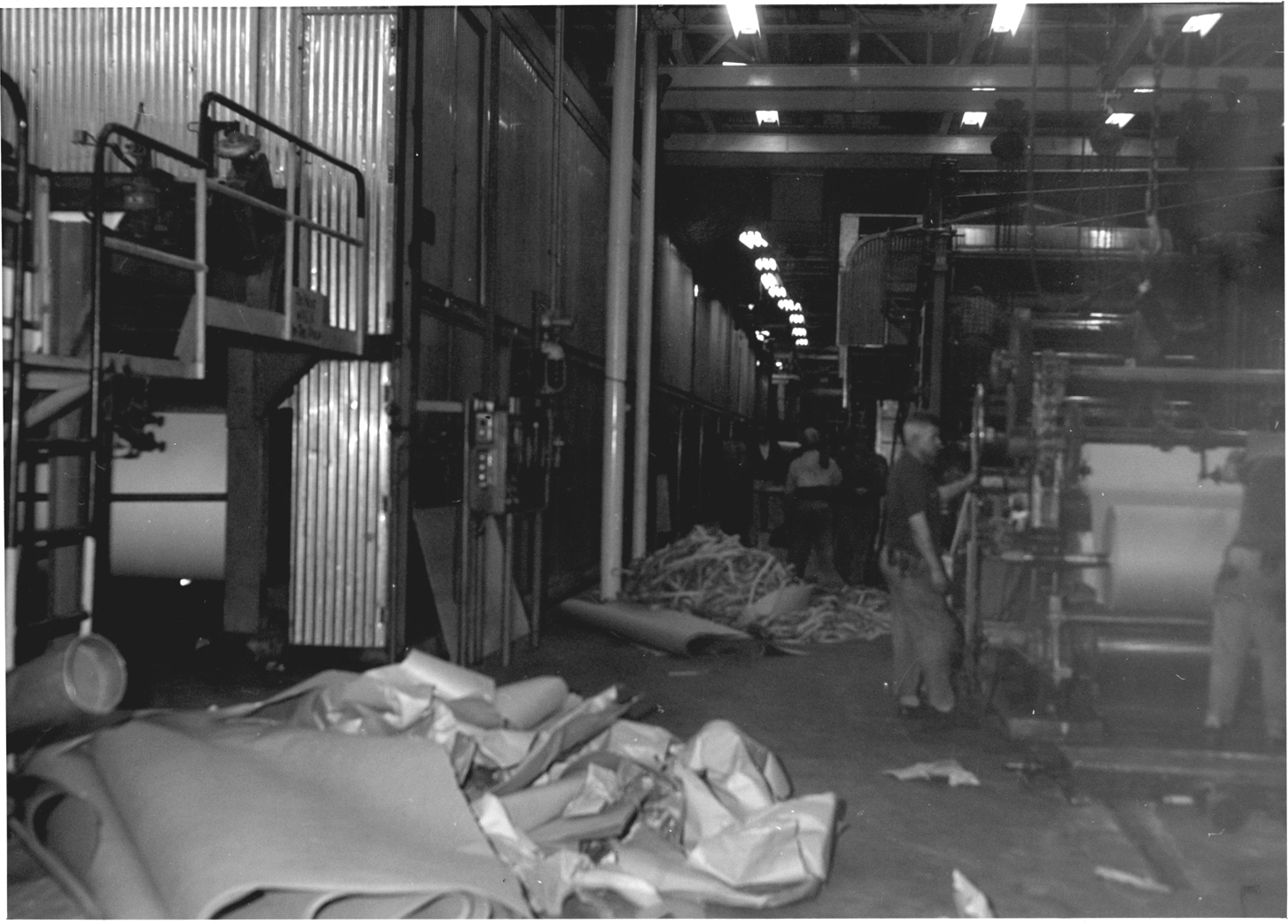
When Don was hired, the work shifts were eight hours in duration. Employees worked seven consecutive shifts and then had two days off. There were afternoon shifts and night shifts too. The pulp and paper machines ran twenty-four hours a day, seven days a week.
A roll of paper coming off the paper machines is from ten to twelve feet in length (full length of the paper machine) and has a diameter of up to fifty inches. The paper is very hot and the roll is tightly wound. Any extra paper or defective paper was cut off the reel by the broke hustler. The resulting smaller pieces of paper can be more efficiently changed to pulp in the beater.
Dry end of Number 1 machine
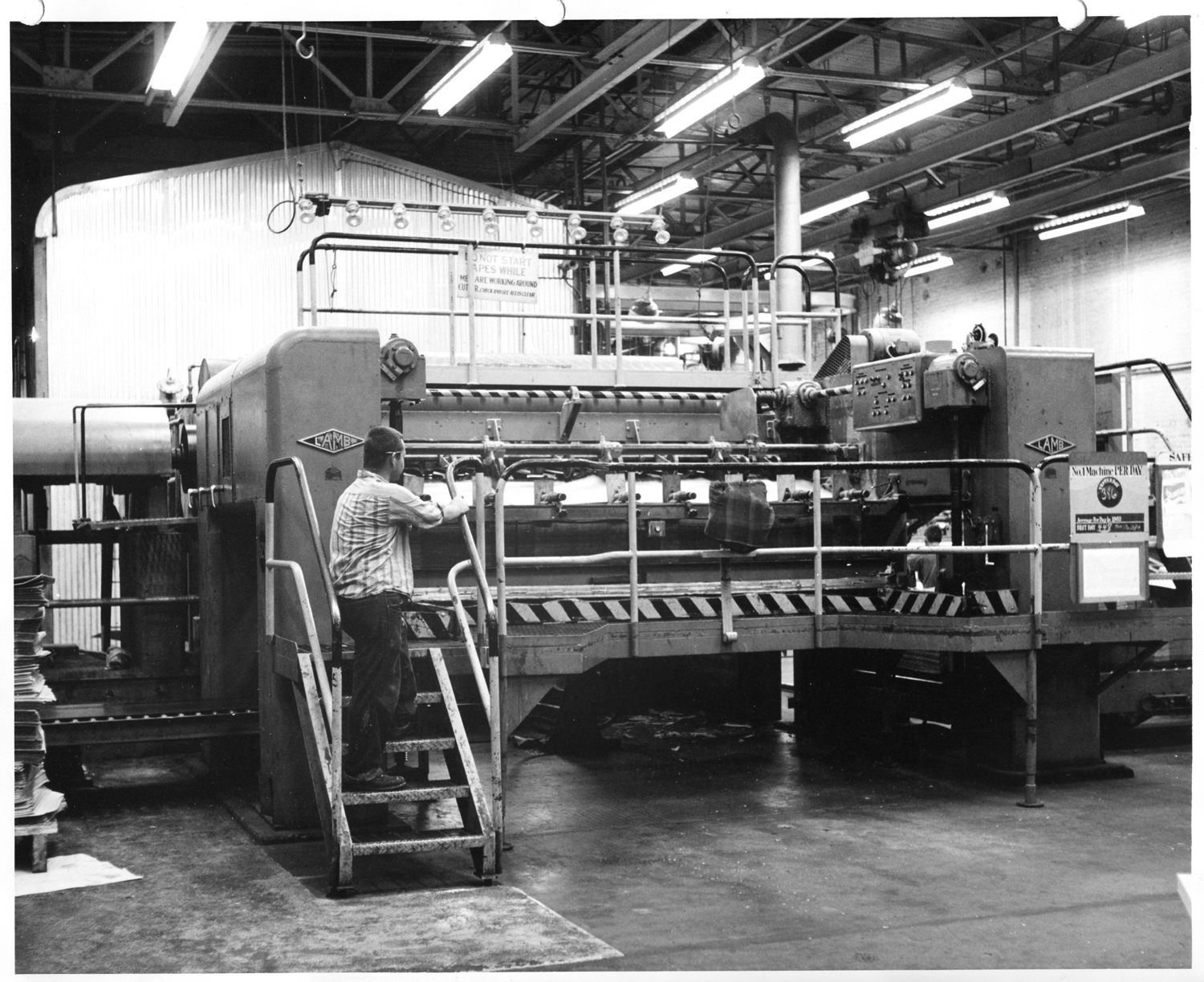
Wet end of the Number 4 paper machine. The paper is passing over the fourdeniere wire. There are suction boxes underneath that draw moisture out of the paper
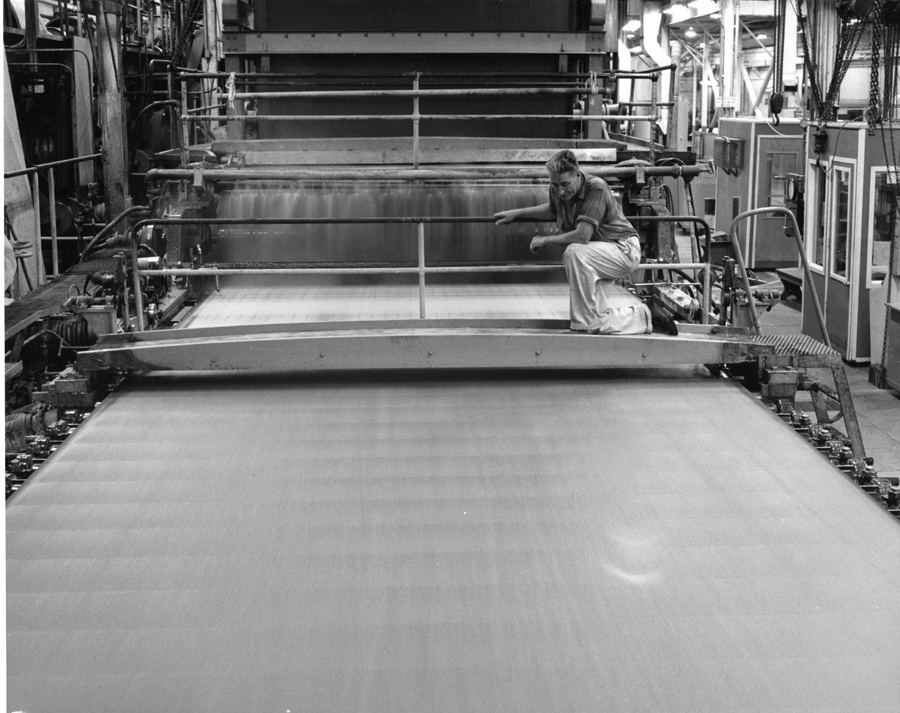
One used a broke knife to cut paper off the reel bar. Don emphasized that a broke knife is a very dangerous instrument in the hands of an inattentive worker. Using a broke knife, Don would cut about one inch into the roll. Then, using a lot of force, he would cut across the entire length of the reel of paper. As the roll was cut, it opened up sheets of paper that had very sharp edges. After cutting the entire length of the roll, Don would peel back the pieces of paper and dump them into the beater below. At the same time, one had to be careful not to overfill the beater with paper.
One potential problem that could cause injury to the worker was the application of too much force on the handle of the blade. If the handle broke away from the blade while the worker was applying force, his arm would slip forward and the worker would receive deep paper cuts to his arm. The same situation could arise if the worker cut too deeply into the roll of paper making it impossible to cut the entire length of the reel of paper. The broke hustler needed to work efficiently and quickly, while at the same time following common sense safety practices.
The broke hustler improvised solutions to minor cuts to one's arm or hand. There was a considerable amount of brown industrial tape used to tape the paper roll ends so that they would not unwind. Many workers simply used the brown tape as a bandage and did not report the incidents to their supervisors.
Another task of the broke hustler was to take low quality paper or extra paper off the size press and store it until it could be dumped back into the beater. The size press is approximately located in the middle of the paper machine. At the size press, a thin sheet of coating sizing (very similar to potatoe starch) is spread over the paper so that the ink will adhere to the paper and not bleed. The broke hustler would go into the size press, where it was extremely hot, and with outstretched arms, grab as much paper as he could hold, and then hurry and store it in an empty hallway. As the machine was running quickly the worker had to really hustle to keep up with paper coming off the reel. It was not uncommon to see two broke hustlers scurrying back and forth, carrying as much paper as they could hold and forming a huge pile of broken paper. This process could potentially last for an entire shift of eight hours. Furthermore, it was disheartening to arrive at work and see a huge mound of defective paper coming off the size press.
During Don's first day at the mill, he had to go into the size press and gather the broken paper. It was extremely hot in the size press, and as he had to work quickly, Don wondered what he had gotten himself into.
A third task for the broke hustler was using the guillotine. The guillotine is a hydraulic press that lowered and raised a sharp blade that cut defective or extra rolls of paper into smaller pieces. The broke hustler lowered the blade which cut into the roll exposing individual sheets of paper. As the blade was cutting, a crackle and pop was heard as the paper was wound under extreme tension. During one particular instance while using the guillotine, Don nicked his finger on the sharp blade. He simply used the industrial tape as a bandage. To this day Don has a small scar on his finger.
A fourth task of the broke hustler was to go under the paper machine with a water hose and wash any excess pulp into the sewer where it was eventually dumped into the river. There was effluent from other areas of the mill that were also dumped into the sewer. Rumour was that there was so much fiber in the form of pulp in the river that one could walk on the water.
After pulp is processed in the bleach plant, it has the same consistency as porridge. The first step in refining plup to become paper is to treat it in the headbox. The headbox is a container that uniformly distributes pulp. Any lumps of pulp are made consistent. At one end of the head box is an opening where the pulp passes through. The bottom of this opening is called an apron while the top part is called the slice lip. By adjusting the width of the slice lip, various thicknesses of paper are produced. From the head box, the thin sheet of paper goes over a fourdeniere wire. This is a deceptive name in that it is not really a wire, but rather a porous mesh. Underneath the fourdeniere wire are suction boxes that pull the moisture out of the paper.
Pictured here is a sample of pulp. Since processed pulp has the same consistency as porridge, this pulp sample has probably had some of the moisture removed

From the fourdeniere wire the paper goes into various presses that press and squeeze excess moisture out of the paper.
Press section of the pulp machine. Notice the two rollers to the right of the image. Those two rollers press the moisture out of the pulp. The two rollers are operated under extremely high hydraulic pressure. Use the scrollbars to see entire image
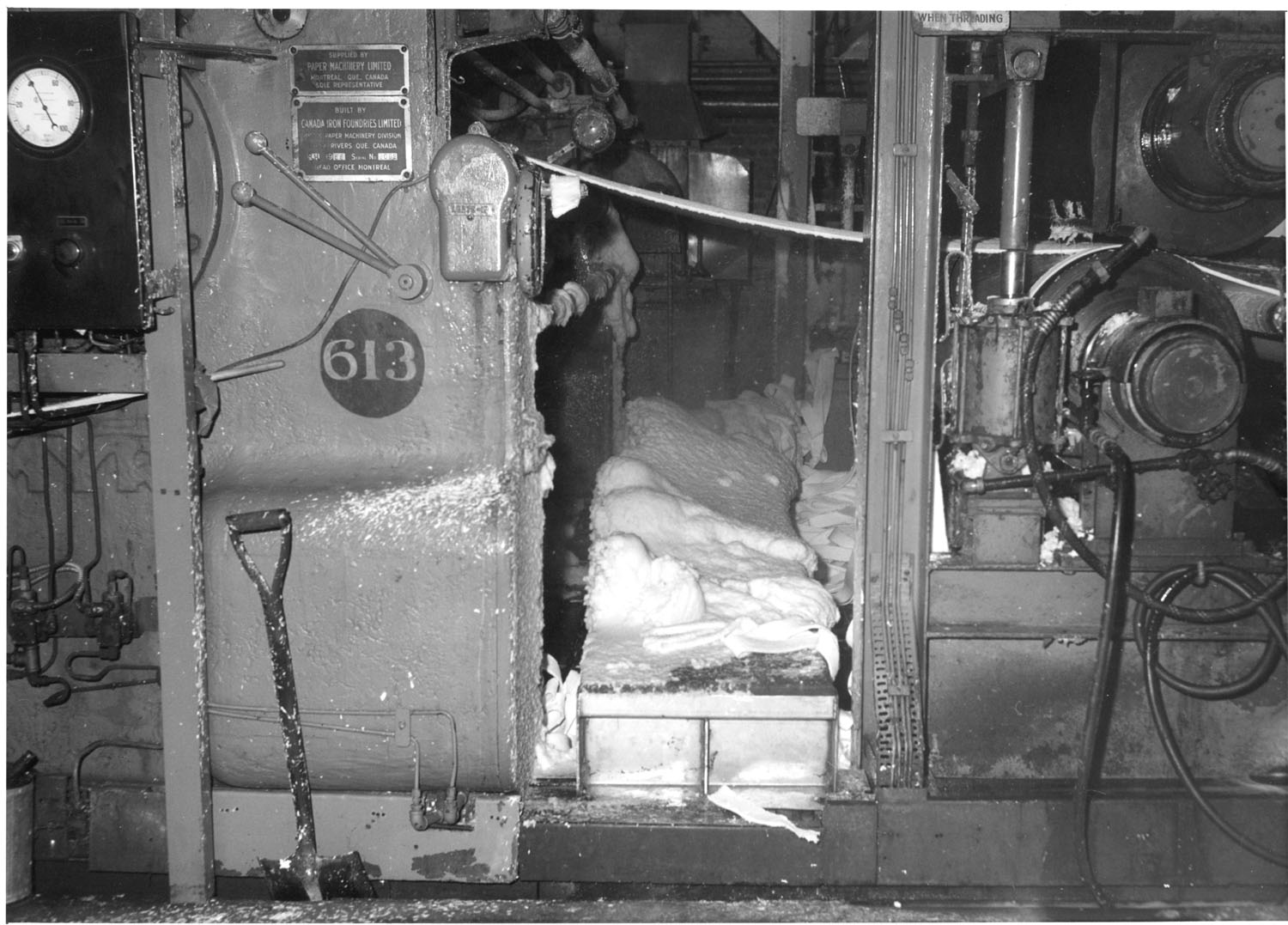
After the press section of the paper machine, there are a set of rollers termed the calendar stack. The calendar stack is a stack of rollers (having a diameter of twelve to fourteen inches) that further squeeze moisture from the paper. The calendar stacks can be up to ten rollers stacked on top of each other. The exterior of these rollers is very smooth as the paper that passes through them has a very fine texture.
After passing through the calendar stack, the paper goes through the dryers. Basically a dryer is a large empty round can that acts as a roller to further press and remove moisture from the paper. A layer of felt exists between the dryers and the paper. This felt allows water from the paper to pass through it. The rollers are steam heated and can reach temperatures of 300 degrees fahrenheit. There are about thirty to forty dryer cans per paper machine. In the past, all the rollers, and all the apparatus that ran the rollers were exposed and in the open. It was dangerous working around them as one's clothing could get caught in the roller causing serious injury to the worker
The process of making paper before it goes through the dryers is termed the wet end of the paper machine. After passing through the dryers the paper is in the dry end of the paper machine.
Dry end of Number 3 paper machine. Look at the diameter of the reel of paper

Wet end of Number 4 machine. The paper is passing over the fourdeniere wire. Underneath are suction boxes that draw moisture out of the paper
 to yell and bark orders at the
employees. One
was not allowed to argue with the foreman. Though the boss tenders were very authoritarian and regimental with the workers, there was a sense of respect paid to them as they had the experience and know-how with operations at the mill. Don believes that this coarse way of communicating with the workers was their way of maintaining safety. If one followed the orders of the boss tenders exactly, there was less chance of injury to the worker. </p>
<h2>Please see the images at the bottom of this web page. The images have
are large to show detail. Use the scroll bar to see the entire image. </h2>
<p class=) Pictured here are the pulp slitters. A wide sheet of pulp is cut by the slitters
into smaller squares. Each square then goes on to a conveyor belt and is piled into a large square bale and sold.
Pictured here are the pulp slitters. A wide sheet of pulp is cut by the slitters
into smaller squares. Each square then goes on to a conveyor belt and is piled into a large square bale and sold.
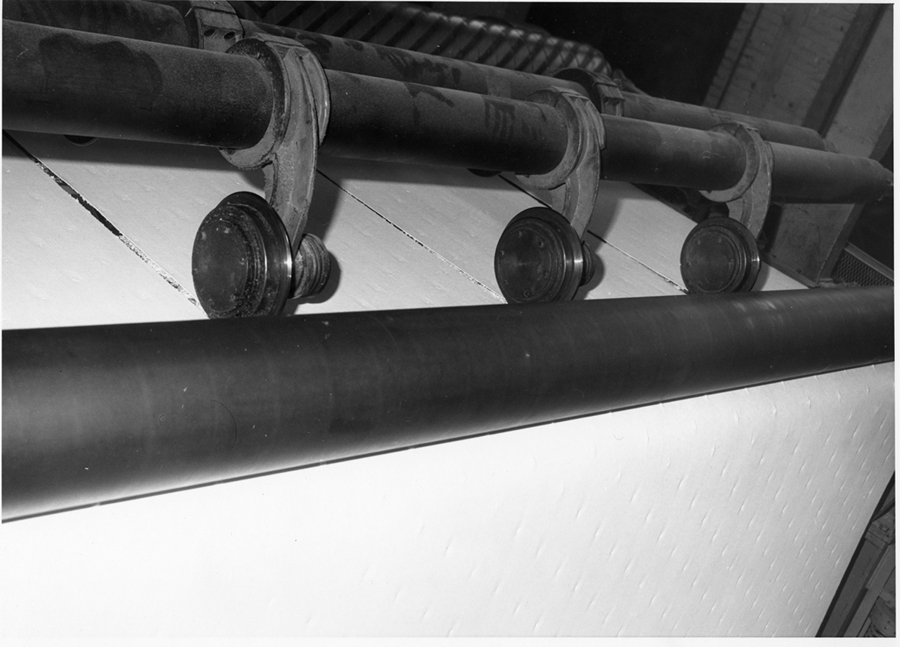
Pictured here is the bale press for the pulp machine. Pulp manufactured in this way was put into 540 pound bales. The bale had a tight wire placed around it so it did not expand. The pulp was then packaged and sent to another mill. Most of the pulp shipments were done by rail car.
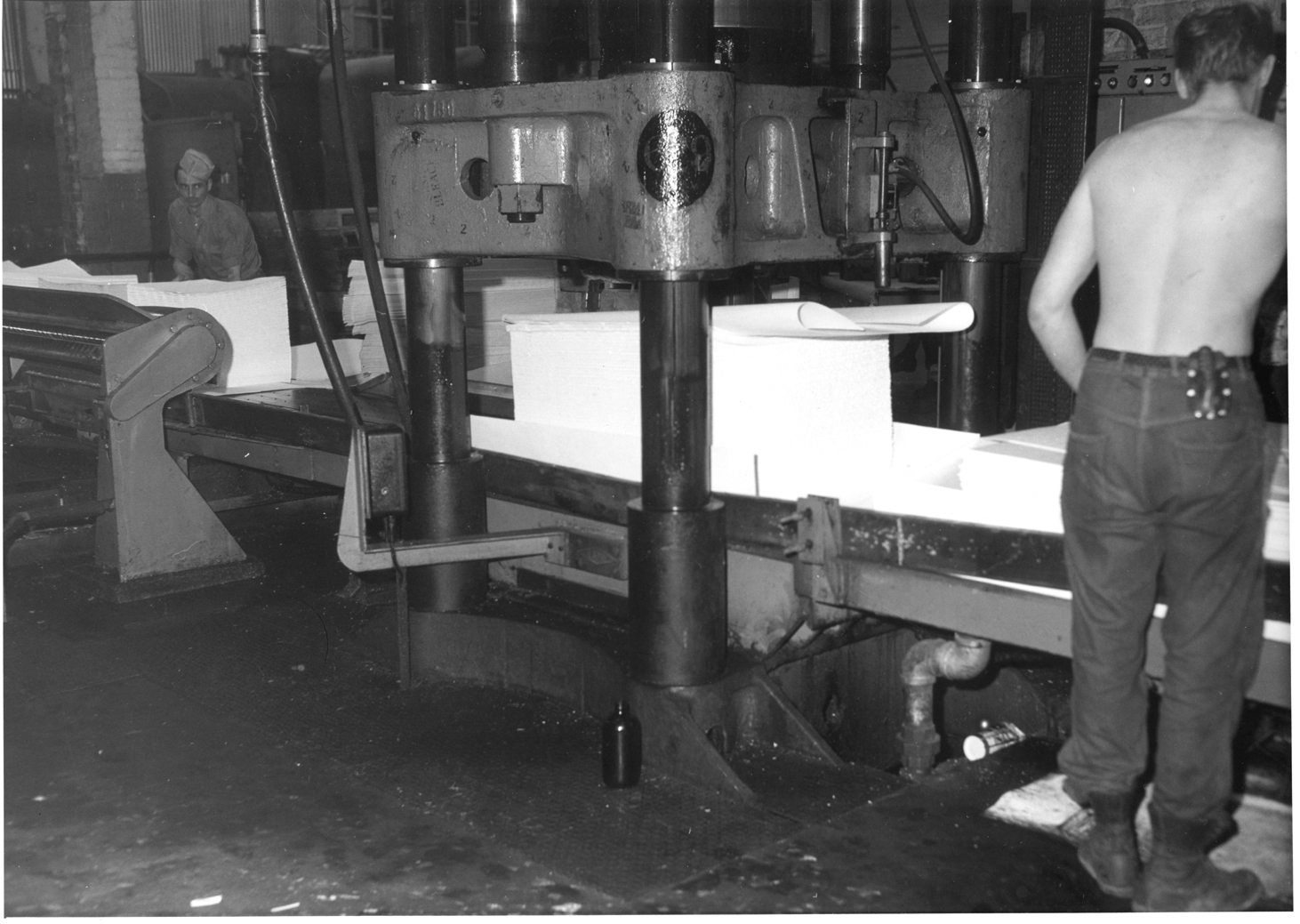
The finished product. Each bale of pulp weighs about 540 pounds. Most pulp shipments from the paper mill in Dryden are done by rail, and most paper products were shipped by transport truck
